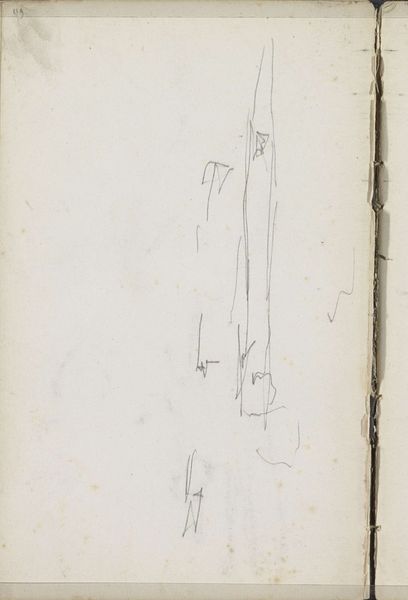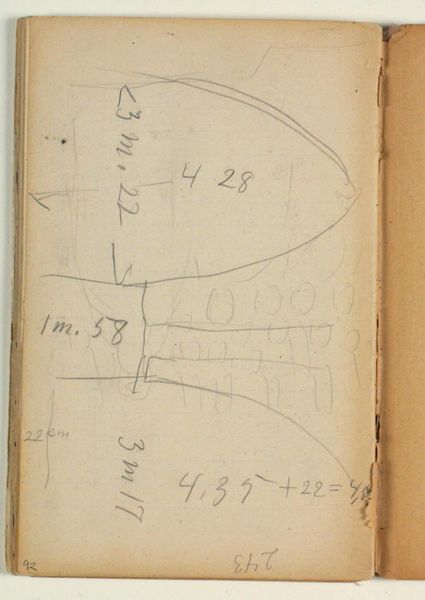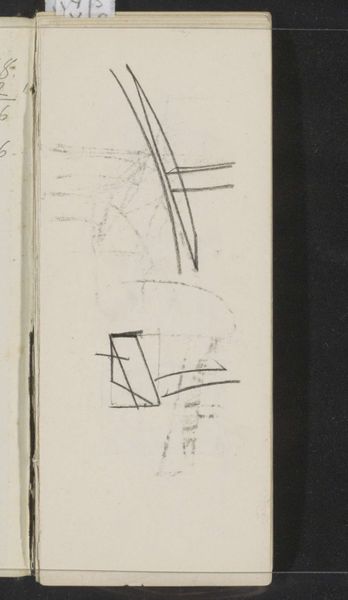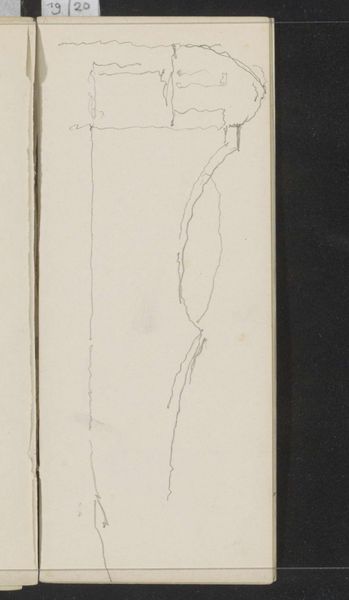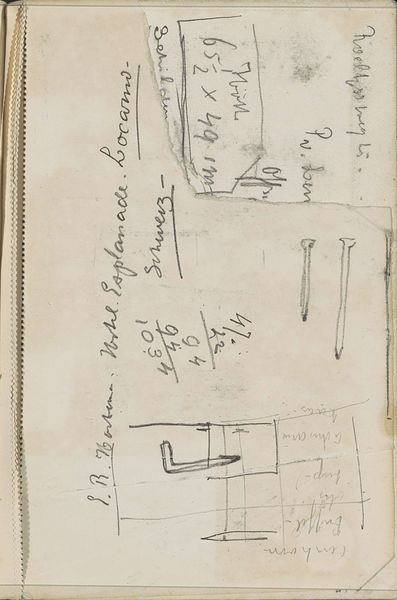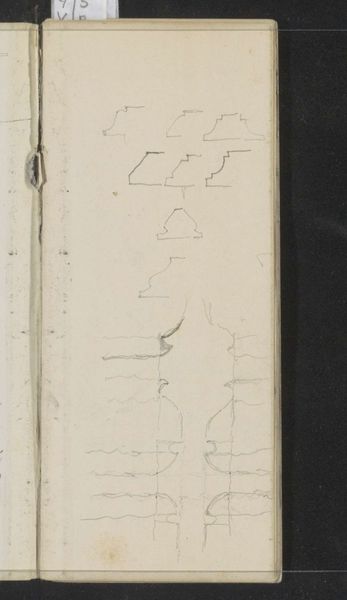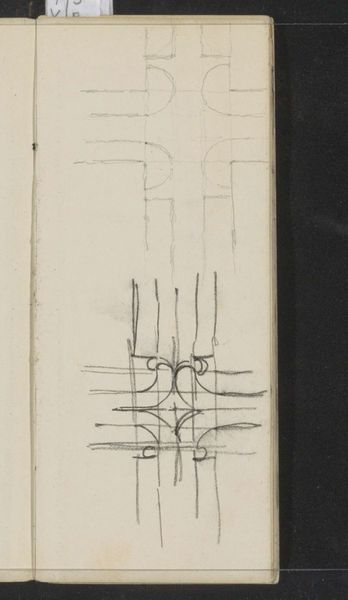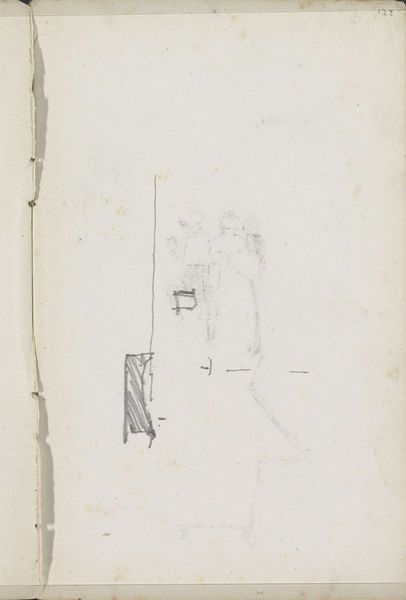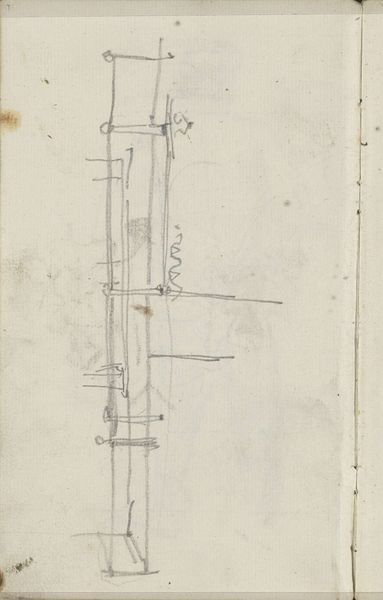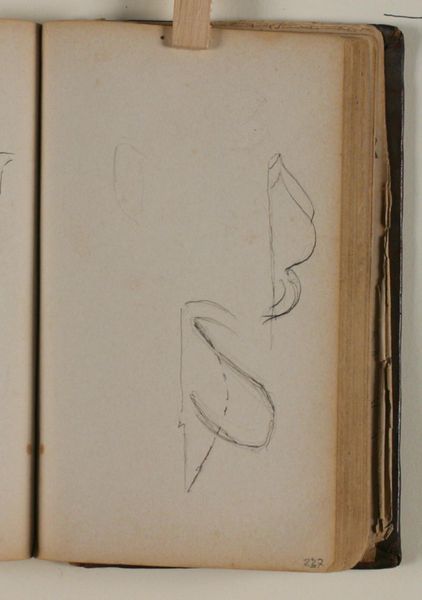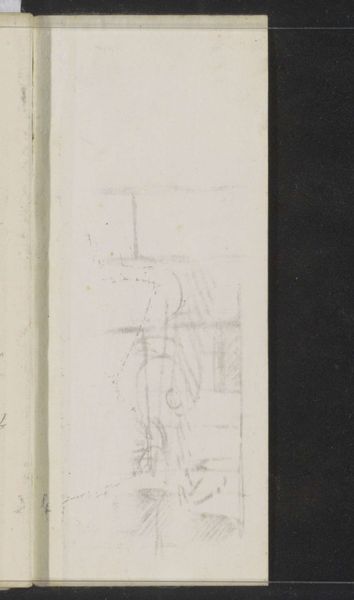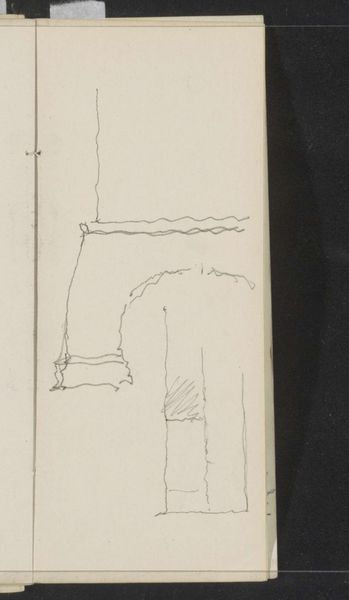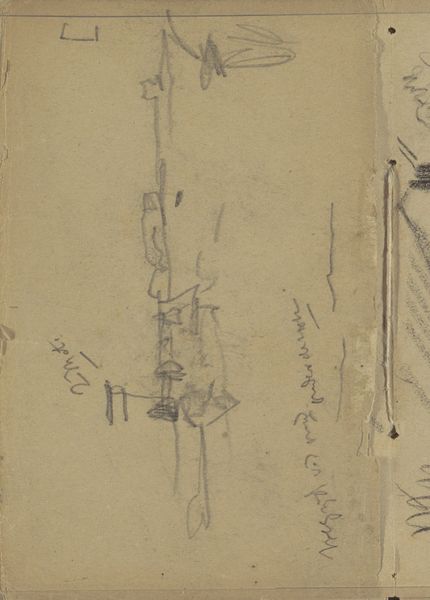
drawing, ornament, pencil
#
drawing
#
ornament
#
hand-lettering
#
arts-&-crafts-movement
#
sketch book
#
hand drawn type
#
hand lettering
#
personal sketchbook
#
hand-drawn typeface
#
fading type
#
geometric
#
pencil
#
line
#
sketchbook drawing
#
sketchbook art
#
small lettering
Copyright: Rijks Museum: Open Domain
Curator: This is a drawing by Gerrit Willem Dijsselhof titled "Ornament," likely created sometime between 1876 and 1924. It resides in the collection of the Rijksmuseum. What strikes you about it initially? Editor: It feels very tentative, almost like a fleeting thought captured on paper. The pencil lines are delicate, and the composition, though simple, hints at something larger, a potential for grander execution. There’s a quietness to it. Curator: Indeed. This sketchbook page offers an intimate glimpse into Dijsselhof's process. The pencil medium, of course, is crucial—cheap and readily available, it facilitates immediate notation of design ideas. Notice the accompanying handwritten notations; these offer an understanding into the practical application of his design sketches. Editor: It reminds me of the Arts and Crafts movement's broader goals. Dijsselhof's focus seems not on separating 'high art' from everyday objects, but uniting them through careful craftsmanship. The ornament feels almost architectural; did Dijsselhof produce any public-facing designs, perhaps even building decorations, at this time? Curator: Yes, though he also embraced private, interior work. Dijsselhof deeply explored craft and process—furniture making, graphic design—to consider labor's relationship to beauty. His dedication countered the dehumanizing effect of industrial manufacturing prominent at this time. He elevated the craft to fine art. Editor: Thinking about the intended context really illuminates the power dynamics at play. Who had access to art and beautifully crafted items versus the reality for the working class creating these pieces. It poses the question of equitable production in a market-driven world, as relevant now as it was then. This design becomes more than just aesthetics; it signifies the potential for elevating everyday life through thoughtful creation, access, and challenging societal imbalances. Curator: Agreed. The humble sketch itself serves as evidence of design labor – the repetitive actions, careful construction, mathematical reasoning... the human input becomes foregrounded through such transparent process. Editor: Ultimately, considering labor and context elevates a simple sketch into an open dialogue. Dijsselhof invites us to critically consider the making of our surroundings and our social positions to these spaces. Curator: A wonderfully incisive perspective; a testament to the power of artistic intention intertwined with craft and social critique.
Comments
No comments
Be the first to comment and join the conversation on the ultimate creative platform.
